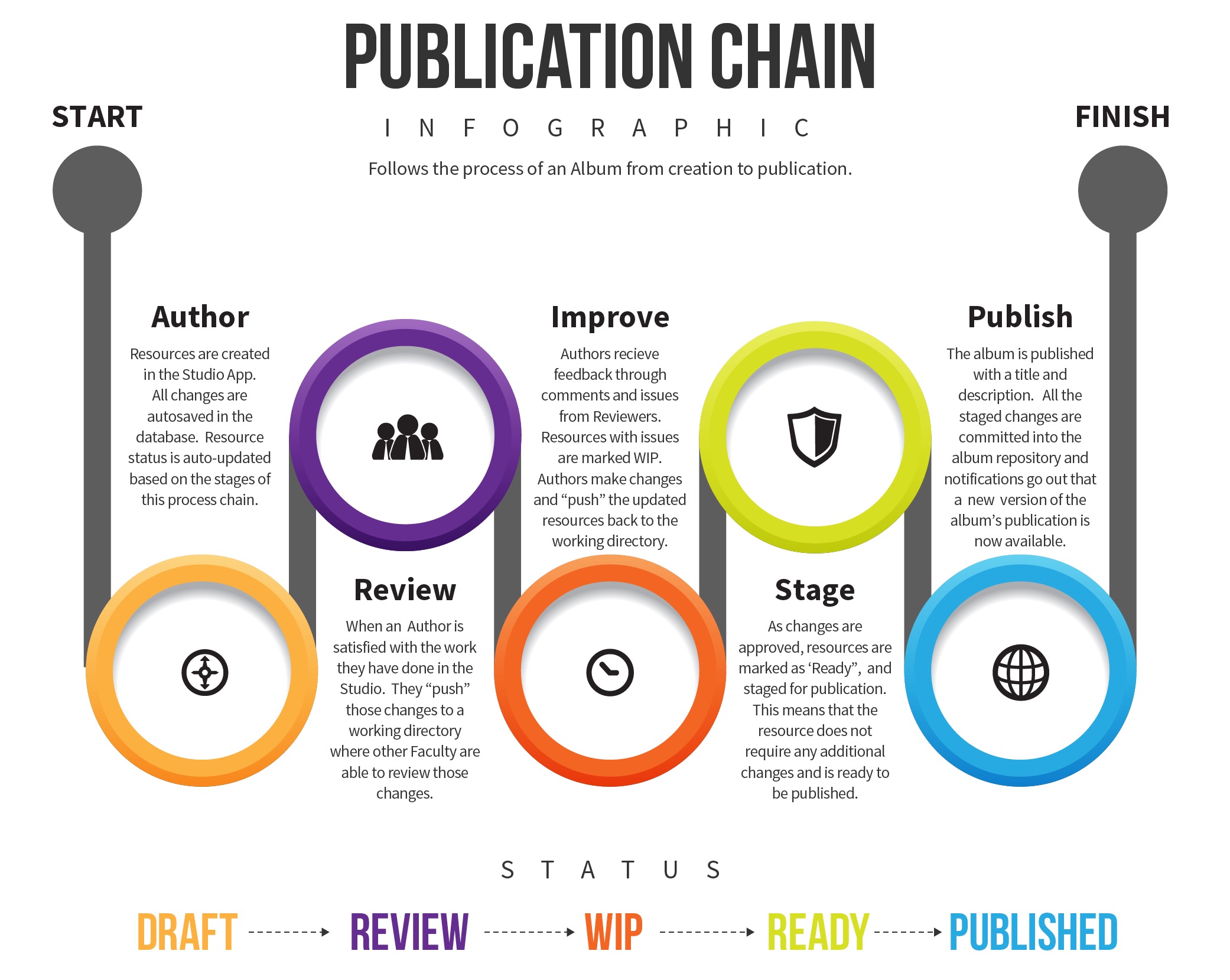Studio
A brief video tour of the Studio application.
Artifacts:
• Album Publishing (designer mockups)
• Album Updates (designer mockups)
Business challenge
My team hand coded HTML content in the first two versions of the Learning Album Delivery application. As the platform grew in popularity, we couldn't keep up with demand. The albums were getting too big and the changes too frequent. I would have needed to hire an army of contractors just to keep pace, let alone grow the product.
Our solution
I put together a business case to build a complementary application that would let instructional designers create and publish learning albums. Not only would it have to be dead simple for non-technical staff to author digital content, but the tool needed robust reuse and single-sourcing capabilities. We had to build our own content management system.
In my previous role at Verizon, I was responsible for implementing an off-the-shelf learning content management system (LCMS). While that project did generate an overall positive business impact, the tool itself was too difficult and poorly designed to support our organization, and we retired it. But I was able to take those learnings and apply them to the new Learning Album LCMS.
I hired a vendor to build the application, with myself operating as the product owner. We followed a fairly rigorous scrum process with two week sprints initiated by thorough sprint planning sessions and capped by retrospectives. After 4 months, we had a fully functional LCMS that our HR staff could use to manage their own learning albums. At that point, our team assumed development ownership of the application.
Business impact
Within a year of launch, over 750 albums had been created. The reuse and single-sourcing capabilities in the LCMS alone saved Verizon $1 million per year. Instructional designers were able to create complex reuse models, in some cases building a "master" album that fed content into 30 different albums! Our application allowed a small handful of designers to maintain curricula for the entire customer service organization and its many sub-groups.
Looking forward
As with the Delivery application, the business quickly outgrew what my team had built. Albums had been published 25K times (now nearly 40K), and the publish database table alone was pushing 100GB. This wasn't sustainable, and it was another major contributing factor in the decision to rebuild the entire platform. Our LCMS customers, some 200 instructional designers, were also eager for improvements. Years of providing end user support, conducting regular interviews, and attending countless team meetings helped us define the 3 or 4 major areas for improvement.
The new LCMS was branded "Studio." The UI was aligned with the Delivery application, featuring a more visual and integrated authoring experience with functionality to help instructional designers create more dynamic content. Just as importantly, the publishing workflow was made more robust with clearly defined stages.
The new publish flow applied a bit more rigor to the process, ensuring data integrity all the way down the line and a more manageable publish database at the end. Here are high fidelity mockups (based on my wireframes and user stories) showing how we translated this flow into the UI.
To accompany the new publishing UI, we introduced an Updates view in each album. The Updates view groups publishes into major and minor publishes. This helps all concerned users track the volume and frequency of content changes. Once again, these mockups were created based on my wireframes and documention.
The capabilities in the new Studio application — including smart content reuse, real time collaboration, quizzes and assignments, and a robust publishing workflow — rival those of other tools and means our product will have a competitive advantage when we explore a commercial offering in 2019.
Here is the full technology stack for the latest Studio application:
Docker 18+, Ruby 2.3/2.4, MySQL 5.7+, PostgreSQL 10+, Redis, Solr, ImageMagick, Passenger, Capistrano, AWS EC2, AWS RDS (MySQL and PostgreSQL), AWS Lambda, AWS S3, AWS SES, AWS SNS, AWS SQS, React.js, New Relic.
